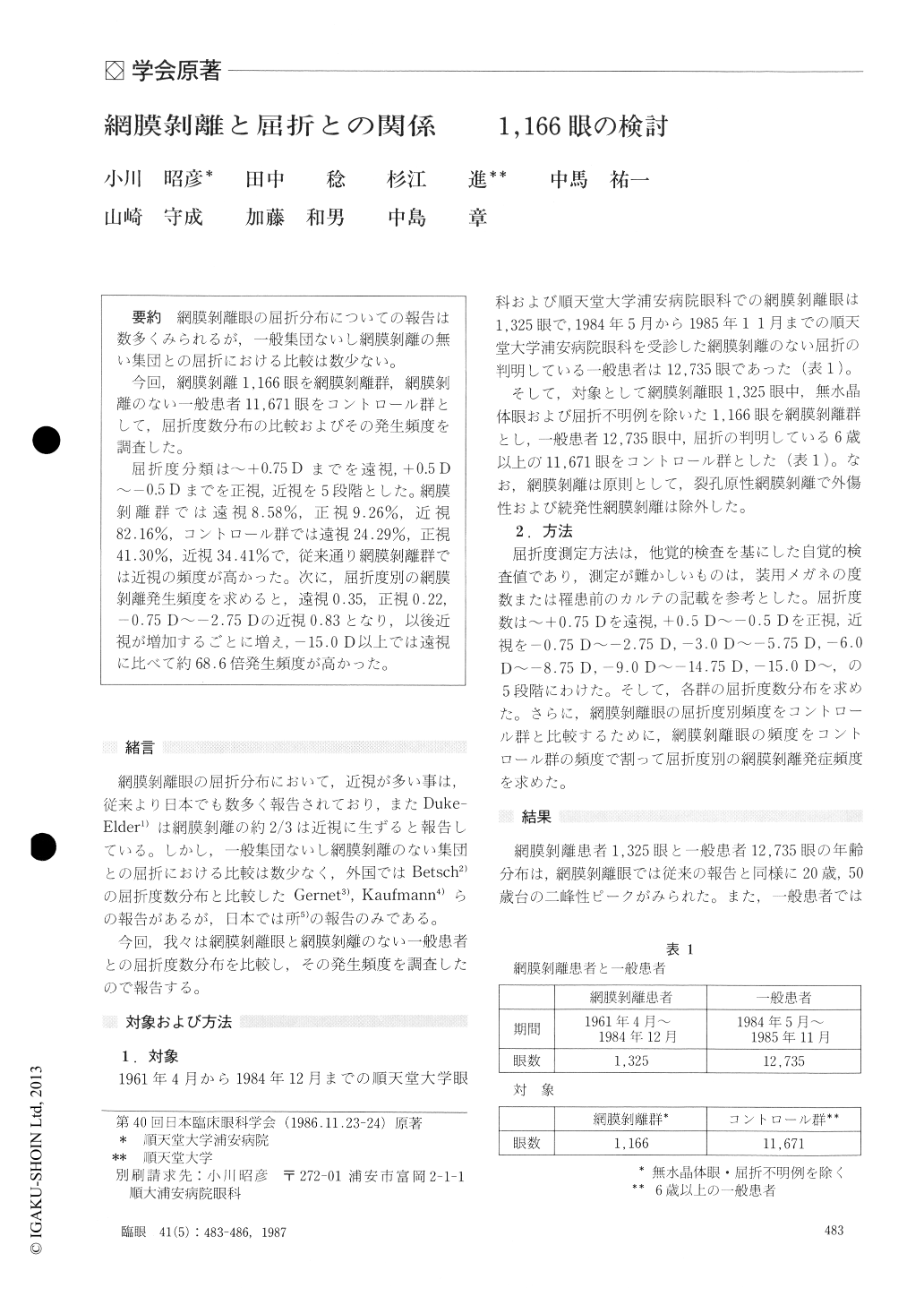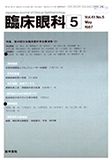Japanese
English
- 有料閲覧
- Abstract 文献概要
- 1ページ目 Look Inside
網膜剥離眼の屈折分布についての報告は数多くみられるが,一般集団ないし網膜剥離の無い集団との屈折における比較は数少ない.
今回,網膜剥離1,166眼を網膜剥離群,網膜剥離のない一般患者11,671眼をコントロール群として,屈折度数分布の比較およびその発生頻度を調査した.
屈折度分類は〜+0.75Dまでを遠視,+0.5D〜−0.5Dまでを正視,近視を5段階とした.網膜剥離群では遠視8.58%,正視9.26%,近視82.16%,コントロール群では遠視24.29%,正視41.30%,近視34.41%で,従来通り網膜剥離群では近視の頻度が高かった.次に,屈折度別の網膜剥離発生頻度を求めると,遠視0.35,正視0.22,−0.75D〜−2.75Dの近視0.83となり,以後近視が増加することに増え,−15.0D以上では遠視に比べて約68.6倍発生頻度が高かった.
We evaluated the distribution of refraction in 1,166 eyes with rhegmatogenous retinal detachment. Another series of 11,671 eyes without retinal detach-ment were also evaluated for the sake of control.
The age distribution of age in detachment cases showed a bimodal curve, with the first peak at 20 years of age and the secondary peak at 50 years.
We then calculated the relative frequency of retinal detachment for different grades of refrac-tion. The incidence of detachment was 0.35 in em-metropic eyes, whereas the incidence was 24.0 in eyes with myopia greater than minus 15 diopters. It would therefore follow that myopic eyes of minus 15 diopters or greater are about 69 times more prone to retinal detachment than emmetropic eyes.
Rinsho Ganka (Jpn J Clin Ophthalmol) 41(5) : 483-486, 1987

Copyright © 1987, Igaku-Shoin Ltd. All rights reserved.


